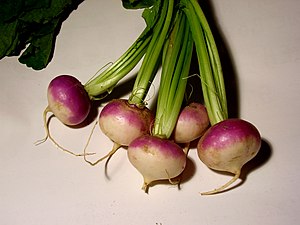
You’ll never see these flowers in a
Russian Hospital !
Occupations...
Optician stores... that don’t adjust what they sell. We assumed the people who sold us glasses would adjust them, but they can’t... and don’t worry about it. Typical of many people here who don’t want to expand their knowledge to gain more customers.
Pharmacies rarely have a pharmacist on site, just clerks. A written prescriptions is only necessary for some psychological drugs. What’s good is that there’s no charade of professionalism by placing a personalized label on a vial... pills are sold in the same package they are shipped in to the pharmacy from elsewhere in Russia, Germany, India, wherever.
Supermarket managers feel in an elevated position, but are not eager to talk to customers. They don’t have a badge with a photo and have no customer desk to welcome you.
Russians favor black more than most Americans. It’s easier to keep your clothes looking clean when you have a car. Now I see splashes of color more, including orange, which is surprisingly popular.
Apartment hallways are often drab, dirty, and poorly maintained. I’ve never seen an inspection form posted in an elevator. Elevators are often vandalized and have graffiti. Russians often don’t seem to care much about poor and unsafe building conditions outside of their own apartments. Exterior appearance, what realtors call Curb Appeal, gets little attention.
Flowers are not welcome at hospitals (they’re considered unsanitary). Are Cut Flowers Really Bad for Hospital Rooms? refutes this belief. Russians don’t send Get Well cards but telephone instead.
Russian cities don’t have good and bad neighborhoods... no ghettos as in America.
A thought... Russians mostly live in vertical villages, in apartments, Americans horizontally in houses.
Laundry soap is sold in small boxes, the size of a large paperback. Large economy sizes don’t attract Russians. Small sizes remain popular perhaps partly because many people carry groceries home from the store.
Smoking...
60% of Russian men smoke, 20% of the women... but younger women smoke 10 times more than older women, so this is trending up. In contrast, 20.5% of American men smoke, 15.8 of American women. smoking United States (If you figure that Russia has 1/2 the population of the US, but their men smoke three times as much... the result is more deaths from cigarettes in the Russian male population than in American men).
You can buy smokes for 60 rubles, around $1.50. Cigarette prices 2013 Bloomberg.com A pack of 20 Marlboro cigarettes costs $1.74 in Russia, compared with $6.36 in the U.S. Soon an increase will make an average pack price double to $3.00.
The Russian government has banned smoking at work, at theatres, museums, beaches, parks, playgrounds, restaurants, hotels, markets, government offices, apartment lobbies, schools, hospitals, clinics, all trains, buses, planes, within 10 meters of bus stops, and railroad stations.
Cigarettes cannot be displayed in stores, only a price list. No cigarette advertising is allowed, no more sponsored events, TV and movies may no longer show smoking, unless artistically necessary. The ban on smoking in restaurants, trains and hotels will be effective this June. RIA NOVOSTI The Russian prison system will have separate sections for smokers.
I was surprised to see that unified steps to discourage smoking haven’t been possible in the US because smoking regulation is left to each of the 50 states, local towns and cities, territories, and tribal areas. European countries are well ahead of Russia with smoking bans.
Food...
Prepared food generally has fewer or no additives than that sold in America. Russia has stricter rules about healthy food... Little or no GMO grain imports. Medicated and bleached chicken, and beef with hormones are frequently refused from the USA and elsewhere.
Most mayonnaise is sold in squeeze bags, not bottles or jars... ketchup, too. Russian mayonnaise has sunflower oil.
Butter in Russia has no salt. That’s good for lower blood pressure, but the missing iodization means higher levels of retardation.
Bread has no sodium propionate to retard spoilage. An extra loaf lasts a long time if placed in the freezer.
Cheese is more likely to get mold because of few or no preservatives. You can keep it fresh by putting a piece of cloth soaked with vinegar in the holder.
Russian behavior...
Men shake hands, but usually look away while doing so. My mother’s advice to ‘smile, look them in the eye, and use a firm handshake’ doesn’t seem to apply.
Russians mind their own business. They aren’t quick to call the police to complain as many do in America. In America the police seem to be everywhere, but police in Russia are often absent, don’t swagger, don’t feel they are paramilitaries on terrorism alert. However, they may not be available when you need them. They respond to a crime, but usually have no interest in prevention, or detection.
It’s very hard to scare a Russian. They are sympathetic about 9/11 but have seen much worse without panicking.
Comment or send an Email...
You can leave your comment by clicking the title above or the word comment next to my name and date below. Or you may click Write Us in the right hand margin to send a private email. I’ll be sure to respond.
Technorati Tags:
Opticians,
pharmacies,
supermarkets,
taxis,
home repair,
education,
medical costs,
transport,
flowers,
neighborhoods,
packaging,
smoking,
mayonnaise,
unsalted butter,
sodium propionate,
cheese,
social customs,
9/11.











